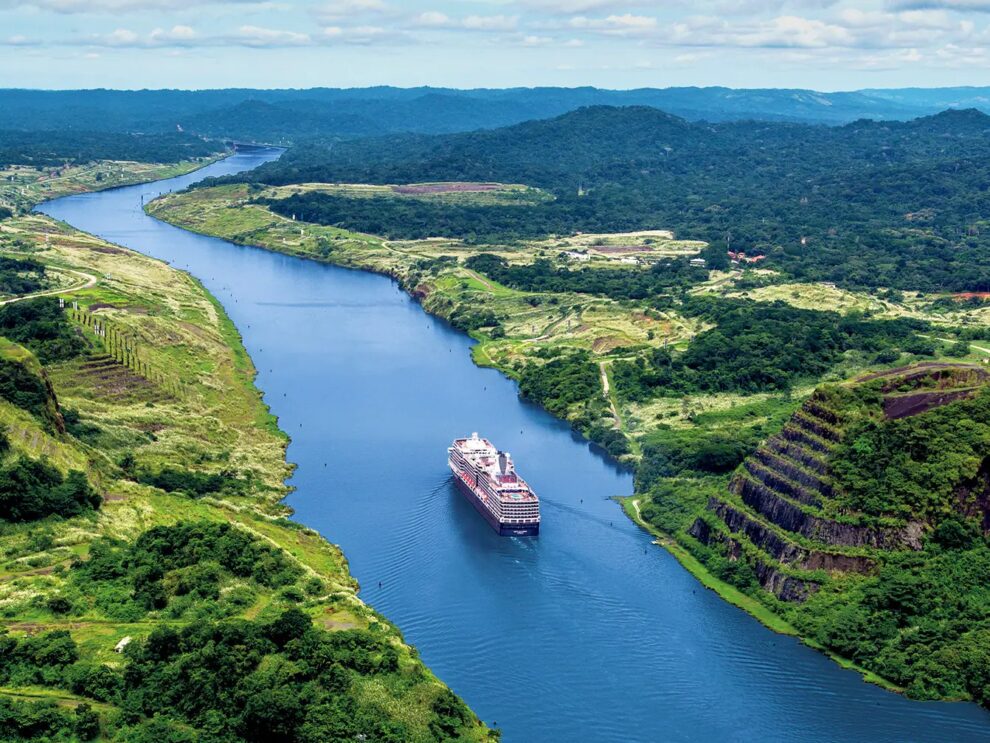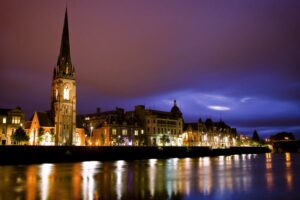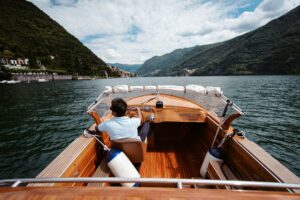Transiting the Panama Canal from the Caribbean to the Pacific Ocean is a once-in-a-lifetime trip for many travelers, especially for history and engineering buffs. If you’re considering this bucket-list sailing, you’ll want to find the best time to cruise the Panama Canal, whether that be to find better weather, lower pricing or fewer crowds.
The Panama Canal cruise season peaks between October and April, outside of the rainy season that can start as early as mid-March and extend into the fall. With a tropical climate, this region is home to rainforests, incredible biodiversity, lush landscapes, abundant wildlife and beautiful beaches, but the weather can be wet at certain times of the year.
Panama Canal itineraries come in several flavors. One-way cruises sail between Florida and California, Washington or Canada; these complete a full transit of the canal. Partial-transit itineraries sail round-trip from Florida ports and only go through the locks on the Caribbean side. Some ships depart from or end in Panama or Costa Rica and feature itineraries that focus on the Pacific Coast of Central America or the Caribbean.
In addition to visiting Panama, many itineraries include ports of call in Costa Rica, Guatemala, Nicaragua, Colombia or Mexico, which can be the highlight of the trip, especially for outdoor enthusiasts.
It used to be that only smaller Panamax ships could squeeze through the locks of the Panama Canal. However, with the opening of a new set of locks in 2016, larger New-Panamax-sized ships can transit, as well. That means you take a Panama Canal cruise on a small-masted Windstar ship or luxury Silversea cruise or can sail on a megaship as large as the 1,094-foot-long and 136-foot-wide Norwegian Bliss.
Here, we look at Panama’s peak cruise season month by month, so you can consider the weather, pricing and crowds to determine the best time to cruise through the Panama Canal.
October
Pros: October is one of the best months for cooler temperatures, lower fares and fewer crowds.
Cons: October is still the rainy season, and it’s humid. It’s also hurricane season in the Caribbean.
Ships: Princess, Holland America, Norwegian, Royal Caribbean, Disney Cruise Line, Oceania, Hurtigruten Expeditions, Lindblad and luxury lines Scenic and Silversea offer sailings during the month.
October is a rainy month, but it’s also one of the coolest months of the year, with high temperatures in the low to mid-80s. The average year-round temperature in Panama is about 86 degrees, so it doesn’t vary much during the year, but it’s more humid in October with the wet weather. It’s also possible to have hurricanes this time of year if you’re cruising in the Caribbean.
For outdoor adventure seekers, it’s too wet for hiking in the rainforests, but other activities benefit from the rainy season, including whitewater rafting. In Quepos, Costa Rica, Windstar Cruises offers rafting trips to the town of Santo Domingo, where you can take a float trip on the Savegre River. Experienced surfers can also check out the big swells on both coasts of the country.
If you have an extended stay in Panama City, consider a trip to the Archipelago de las Perlas (Pearl Islands) in southeastern Panama to view the humpback whales. It’s a short flight to the islands, or you can travel by ferry to see the whales that are still in the waters around the archipelago after coming to breed in August and September. If traveling earlier in the month, you may also see nesting loggerheads and green turtles southeast of Panama City in Isla Canas (Cane Island) or Bocas del Toro.
November
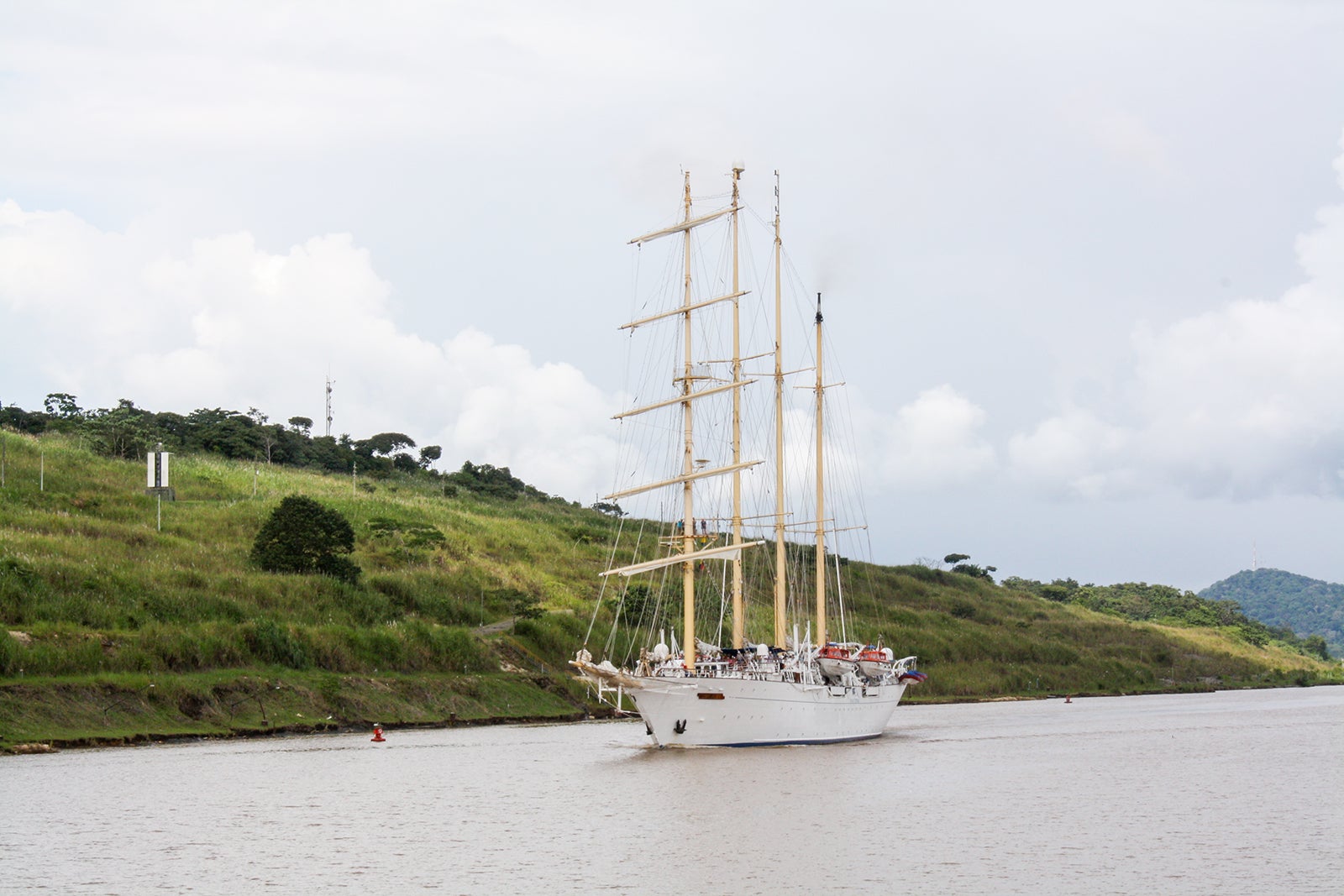
Pros: November is one of the best months for lower cruise fares.
Cons: November is still the rainy season and the end of hurricane season. You can also expect some crowds in port with the national holidays.
Ships: Windstar, Star Clippers and Seabourn will also have vessels transiting the Panama Canal in November.
November can be rainy — and even the rainiest month of the wet season — with temperatures starting to warm closer to December. The month brings a mix of low-priced early-season fares but also several public holidays that bring crowds of both tourists and residents to attractions in places like Panama City and Boquete.
For a rainy-day excursion, ride the Panama Canal Railway, one of the world’s great train rides. If you’re in Panama City, plan an indoor excursion with a visit to the world’s first museum dedicated to biodiversity, the Frank Gehry-designed Biomuseo.
You can celebrate Panama’s Separation Day on Nov. 3 or Flag Day on Nov. 4. These holidays, along with a few others in November, feature parades, parties and other displays of national pride, so you can expect it to be busy in towns across the country.
December
Pros: December is the beginning of the dry season, so the weather will be drier and less humid.
Cons: The month is one of the busiest times for tourism, so you can expect to pay higher fares and have more crowds in port.
Ships: A few additional cruise lines offer Panama Canal crossings during December, including Celebrity, Carnival, Crystal and Regent Seven Seas Cruises.
With drier weather and high temperatures hovering around 88 degrees, it’s less humid in the region in December. However, it’s the holiday season, so cruise fares and other costs, like hotels for pre- and post-cruise stays, will be more expensive if you travel this month. December is one of the peak tourism months in Panama, with Panamanians traveling for the holidays and visitors from North America and Europe escaping the cold weather at home.
December is the best month to plan excursions to places like Panama’s rainforest and Chagres National Park to meet the indigenous Embrera people. You can also take an eco-cruise on Gatun Lake, which concludes with a visit to the Agua Clara Locks Visitor Center, where you’ll learn about this engineering feat that connects two oceans. If you’re comfortable exploring on your own, rent a car or hire a local guide to visit places like Soberania National Park.
January
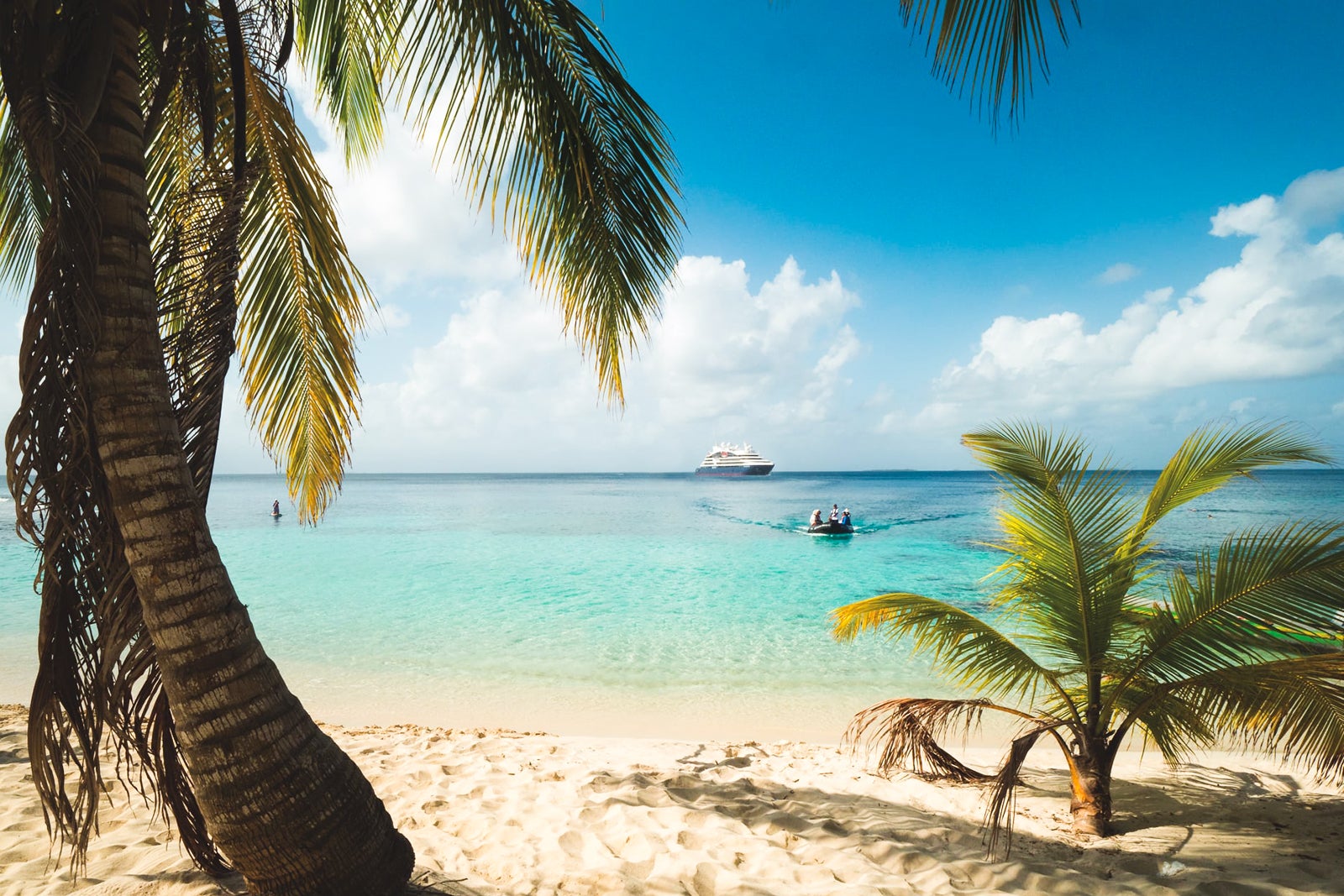
Pros: January is regarded as one of the best months to visit Panama with the drier weather and high temperatures around the mid-80s. It’s also less bustling with tourists than it is in December.
Cons: It’s peak season on land and at sea, so hotel and cruise prices are high. Panama City will also be busy with the jazz festival mid-month.
Ships: Cunard, Azamara, Emerald Cruises and Tauck Tours (with a chartered Ponant yacht) enter the market in January.
January’s dry weather makes the month the perfect time to explore Central America’s national parks, jungles and tropical rainforests, including Costa Rica’s Manuel Antonio National Park and Curú Wildlife Refuge and Panama’s Darien National Park. During your visit, be sure to look for monkeys, sloths, iguanas, blue-footed boobies, capybaras, crocodiles and even manatees on a jungle boat tour along the canal and into Gatun Lake.
If you’re a jazz buff, the Panama Jazz Festival is held in Panama City in mid-January, January 16-21. The six-day event features hundreds of renowned jazz musicians from around the world with live performances, a gala evening and concerts. If you’re embarking in Colon, Panama, you can fly into Panama City a few days early for the festivities. The distance between the two cities is less than 50 miles. Alternatively, linger in Panama after your cruise to attend the festival, or look for sailings with full-day stops in Panama City during the jazz festival.
February
Pros: February is the second-best month to cruise the Panama Canal, with optimal weather during the dry season.
Cons: It’s still peak season with higher cruise fares and prices ashore — but there are fewer cruise lines in the region. Snowbirds are still avoiding the cold weather and snowstorms at home, so you can expect many tourists, especially in Panama City. Carnival typically occurs across the country in February, depending on when Easter falls that year, bringing crowds.
Ships: Ponant is the only new addition in the region, offering one sailing early in the month. The other cruise lines sailing the Panama Canal in February are Holland America, Oceania, Norwegian, Royal Caribbean, Princess, Carnival, Lindblad, Tauck, Emerald and Windstar.
Take advantage of the final weeks of the dry season to book active outdoor adventure excursions like hiking, kayaking and zip lining. Another option is the Rainforest and Aerial Tram tour to the Gamboa Rainforest Resort in the 55,000-acre Soberania National Park. The tram climbs 280 feet through the dense jungle vegetation to reach the tree canopy above. During the ride to the top, keep an eye out for local wildlife, including white-faced capuchin and howler monkeys, sloths, butterflies, iguanas, toucans and frogs.
Carnival is a festival in mid-January in Panama City and other towns around the country. It’s one of the biggest celebrations in Central America — even bigger than the Christmas holidays for most families, so you can expect crowds during that time.
March
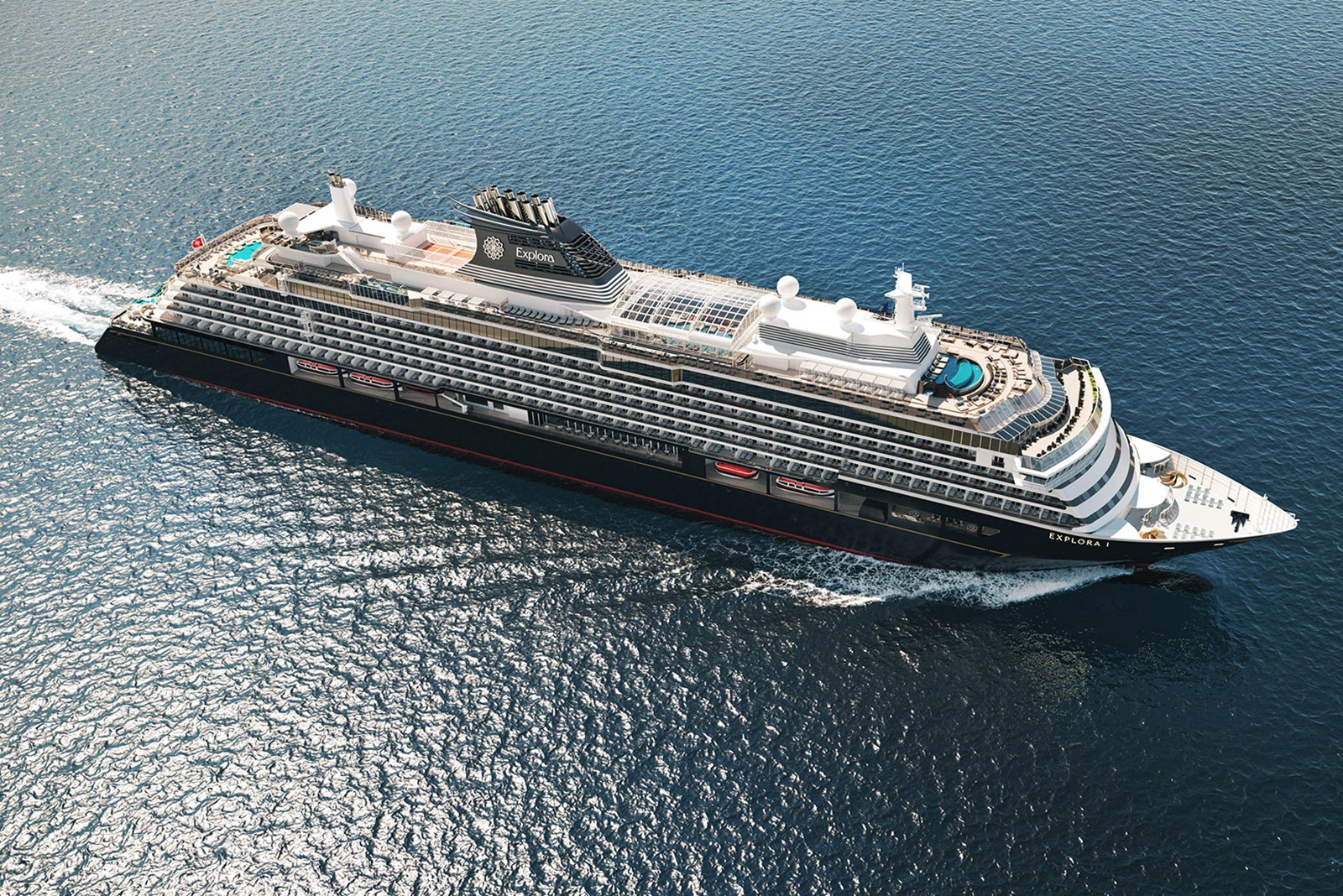
Pros: March is the last month of the dry season, although the rains can start by midmonth during some years. You can expect pleasant weather, although it’s quite warm, with temperatures reaching as high as the low 90s. You can also find late-season low fares on some of the larger ships.
Cons: It’s still one of the busiest months for travel with the moderate weather.
Ships: New luxury line Explora Journeys joins the vessels in the region in March with an extended sailing that includes transiting the Panama Canal.
With the warmer temperatures, March is an ideal month to head to the beaches on one of the San Blas Islands, an archipelago of about 365 islands and cays off the Caribbean coast of Eastern Panama. Some cruise lines that visit the archipelago are Windstar, Star Clippers, Hapag-Lloyd and Ponant.
You can also look for excursions through the cruise line — or make independent arrangements — to go on an adventurous hike under the canopy of the rainforest, take a boat tour to explore the diverse flora and fauna along the canal or go windsurfing or sailboarding on Costa Rica’s Lake Arenal with the Arenal Volcano as the backdrop. March is also the last month for surfing enthusiasts to hit the big waves on the Caribbean and Pacific coasts.
Should Semana Santa (Holy Week, from Palm Sunday through Holy Saturday) fall in March, there will be more crowds nationwide in Panama with religious processions and reenactments, parades and other special events. Many venues and attractions may be closed on some days during the festivities.
April
Pros: April is one of the best months to look for lower late-season fares on the larger ships.
Cons: The weather may not be ideal. The high temperatures in Panama hit just below 90 degrees on most days of the month. Mid-April is also when the wet season typically begins, so you can expect high humidity and rain. It’s also still a busy time with tourists, so the prices are high ashore. If Easter falls in April, you may have to contend with the crowds celebrating Holy Week during the festivities.
Ships: If you’re interested in a sailing on a luxury cruise ship, Silversea is the only luxury line still in the region in April. For a cruise on a large ship, choose among itineraries on Norwegian, Holland America, Celebrity, Royal Caribbean, Carnival and Princess.
With the high temperatures and humidity — and the threat of rain — you might want to take tours where you can easily escape from the heat and the showers. If you’re in Panama City, visit the vibrant neighborhood of Casco Antiguo in the city’s historic district.
Dating back to 1673, the UNESCO World Heritage Site features landmarks like the Panama National Theater and the Cathedral Basilica of St. Mary. You’ll also find some of the city’s best restaurants, beautiful squares and plazas and top-rated museums. If you’ve booked a pre- or post-cruise hotel in town, be sure to catch a sunset from one of the city’s many rooftop bars.
Bottom line: The best time to cruise the Panama Canal
When to cruise the Panama Canal will depend on what’s most important to you.
If having the best weather is your top priority, January, February and early March offer the best weather during the dry season with low humidity — but it’s also the most expensive time to travel to the region. You can expect crowds, especially with the festivals during that time.
If you want the best pricing and fewer crowds, October and November are the rainy season, so the pricing will be lower — and you’ll avoid the holiday crowds and high fares in December.
Late March and April also offer lower fares as it’s the beginning of the rainy season, but you can expect crowds during the Holy Week festivities in the country.
Source: The Points Guy

